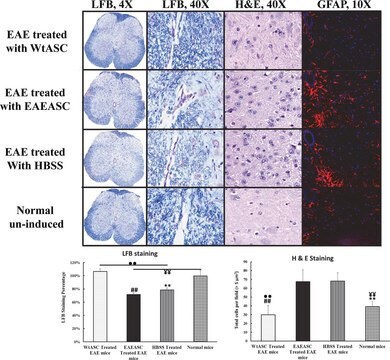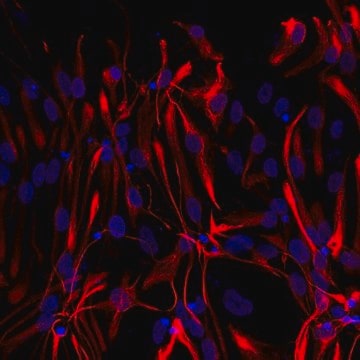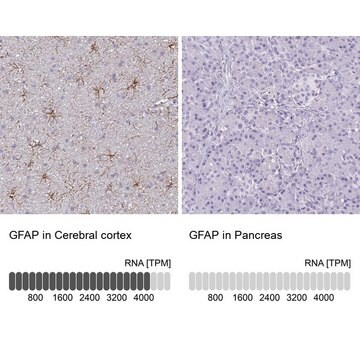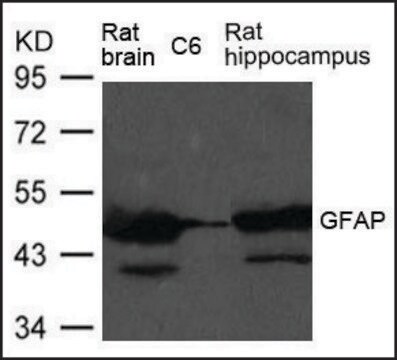G6171
Anti-Glial Fibrillary Acidic Protein Antibody
mouse monoclonal, G-A-5
Synonyme(s) :
Anti-GFAP
About This Item
Produits recommandés
Nom du produit
Anti-Glial Fibrillary Acidic Protein antibody, Mouse monoclonal, clone G-A-5, purified from hybridoma cell culture
Source biologique
mouse
Niveau de qualité
Conjugué
unconjugated
Forme d'anticorps
purified from hybridoma cell culture
purified immunoglobulin
Type de produit anticorps
primary antibodies
Clone
G-A-5, monoclonal
Forme
buffered aqueous solution
Poids mol.
antigen ~50 kDa
Espèces réactives
rat, human, pig
Concentration
~1.0 mg/mL
Technique(s)
immunocytochemistry: suitable
immunohistochemistry: suitable
indirect immunofluorescence: 2.5-5 μg/mL using alcohol-fixed sections of rat brain/cerebellum.
western blot: suitable
Isotype
IgG1
Numéro d'accès UniProt
Conditions d'expédition
dry ice
Température de stockage
−20°C
Modification post-traductionnelle de la cible
unmodified
Informations sur le gène
human ... GFAP(2670)
mouse ... Gfap(14580)
pig ... GFAP(396562)
rat ... Gfap(24387)
Catégories apparentées
Description générale
Immunogène
Application
Actions biochimiques/physiologiques
Forme physique
Clause de non-responsabilité
Vous ne trouvez pas le bon produit ?
Essayez notre Outil de sélection de produits.
Anticorps
En option
Code de la classe de stockage
10 - Combustible liquids
Point d'éclair (°F)
Not applicable
Point d'éclair (°C)
Not applicable
Faites votre choix parmi les versions les plus récentes :
Déjà en possession de ce produit ?
Retrouvez la documentation relative aux produits que vous avez récemment achetés dans la Bibliothèque de documents.
Les clients ont également consulté
Notre équipe de scientifiques dispose d'une expérience dans tous les secteurs de la recherche, notamment en sciences de la vie, science des matériaux, synthèse chimique, chromatographie, analyse et dans de nombreux autres domaines..
Contacter notre Service technique











